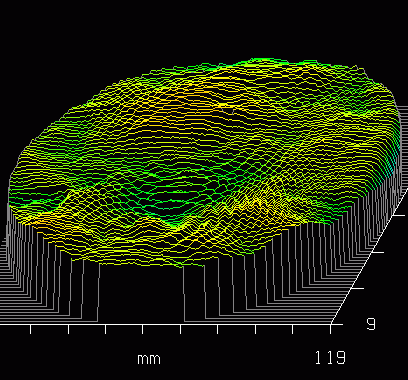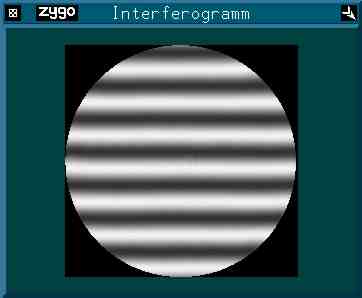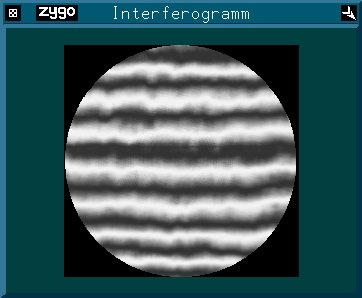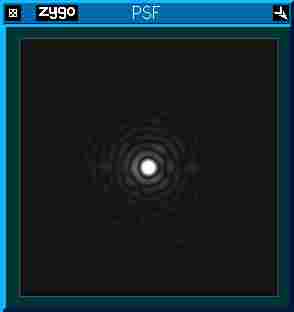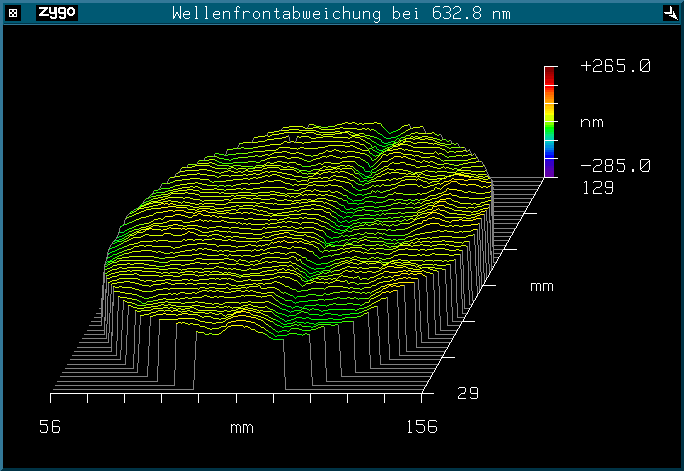Laserinterferometric Wavefront Test with Baader Astro Films
The following stringent test has been performed by an independent optical Institute in Germany which tests amateur telescope optics.
1. Test Method
In order to simulate a telescope in the test arrangement, the uncoated films were mounted between two reference optical windows of highest accurracy and measured in transmission in a parallel beam set up. The influence of the wave front deformation caused by the film was then registered by a Zygo-Laserinterferometer at a wavelength of lambda = 632.8 nm.
Aside of the Interferogram itselfe (first row), the wavefront deformation is presented in relief maps (four graphs).
As an addition, the point spread function (PSF – second row of images) has been recalculated for each measured film. These images represent the Airy disc of a star as it would be seen at the focus of a telescope system.
The registered wave front deformations also served to verify the relevant quality criteria, such as P-V and RMS-values, as well as the Strehl ratio, given below the Airy disc renditions.
2. Rating the films as “optical Windows”
Three film samples and the readings for the reference system w/o film are presented in the table No.1 below. Three substrates have been tested:
- Plain, uncoated AstroSolar® film (annealed). The film had been mounted carefully between two rings of cardboard.
- Plain TurboFilm™ (annealed), mounted frameless between the reference-plates.
- Original Mylar of 12ym thickness (48 gauge), mounted frameless between the reference-plates.
Both substrates from Baader Planetarium tested out to be diffraction limited under all aspects of the measurements across the full testfield of 100 mm diameter. In terms of RMS-values and strehl-ratio both materials surely outperform many Amateur-Telescopes. In the contrary, in spite of frameless mounting – free from stress and ripples, the Mylar-sample deteriorated the laser wave front given by the Zygo Interferometer. The wavefront deformation was notably stronger than it would be tolerable for a diffraction limited optics. The test-results give evidence that the Films from Baader Planetarium are very well apt for optical applications. Most probably they outperform by far a good amount of the so called “affordable Glass-filters” on the market.
The test results also attest to the fact that interferometric values are strongly influenced by the way in which the films are mounted or “framed”. When producing an AstroSolar® filter, care should be given to avoid the film to be folded or put under tension. Any stress on the annealed film would deteriorate the transmitted wavefront, notably reducing the image quality.
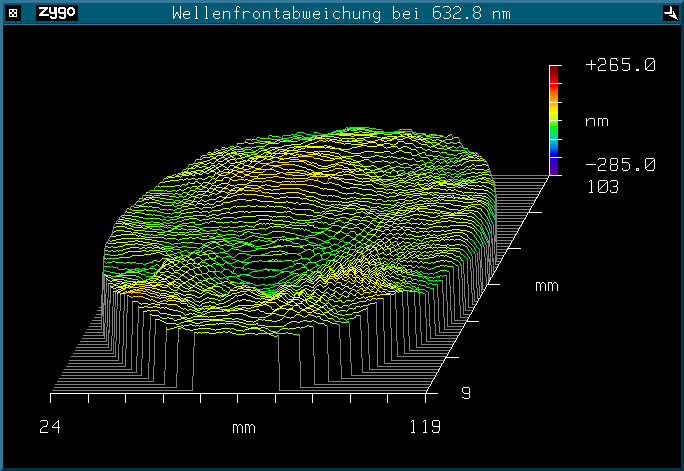 ®” width=”220″ height=”151″ /> AstroSolar®
®” width=”220″ height=”151″ /> AstroSolar®